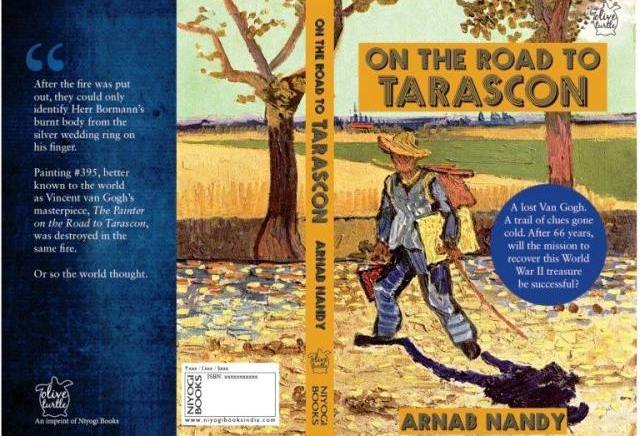
On the trail of a missing Van Gogh
On the Road to Tarascon (Niyogi Books) is a fiction weaved around the disappearance of a Vincent Van Gogh painting, arguably the most important painting to have been lost in the Second World War. In a chat with IBNS editor Sujoy Dhar, young globe-trotting writer Arnab Nandy, who works with a leading English daily in Kolkata, reveals how he came up with the idea of a historical fiction based on the painting and some very interesting things he found out while researching his debut novel.
The Painter on the Road to Tarascon. That is the name of the actual painting, right?
That's right. Van Gogh painted it in 1888 when he was living in Arles in Southern France. Interestingly, he chose not to sign it. The work is also known as The Artist on the Way to Work.
How did you choose this painting as a background for your book?
The background is not the painting per se, but the circumstances in which it was lost. I came across it quite randomly while looking for something on the Internet. What I found online was that the masterpiece had been destroyed in a fire. But when I wanted to find out the precise circumstances in which it was burnt, nothing concrete came up. That's when I decided I had to go to Magdeburg.

Did you find out what you wanted in Magdeburg?
I spent hours at the library of Otto von Guericke University in Magdeburg and also interacted with Dr Tobias Von Elsner of the Kulturhistorisches (Culture and history) Museum there. This is the very museum that owned the painting and where it used to be on display. It had a different name then -- Kaiser-Friedrich Museum. I found the painting was not even at the museum when it went missing/was destroyed. It, along with many other artworks, was stored in an abandoned salt mine in a town called Staßfurt (pronounced Stassfurt), around 30 km from Magdeburg.
So, the fire caught in the mine?
Yes, and it was after the Americans had gained control of the town in 1945. No one knows how the fire started. Basically, no one saw the painting after the fire and it was assumed to have been destroyed.
You're saying it could have survived the fire?
It could very well have.
Where does your story take off from?
The story runs parallel to actual historical events. But it primarily takes place around the end of the war and again in 2011-12. In 2011, the discovery of a lover's note among a senile woman's possessions starts a chain of events that could possibly lead to the lost painting.
That sounds interesting! Where can our readers find their copies?
On the Road To Tarascon is available on Amazon India and other online stores, apart from regular bookstores.
Support Our Journalism
We cannot do without you.. your contribution supports unbiased journalism
IBNS is not driven by any ism- not wokeism, not racism, not skewed secularism, not hyper right-wing or left liberal ideals, nor by any hardline religious beliefs or hyper nationalism. We want to serve you good old objective news, as they are. We do not judge or preach. We let people decide for themselves. We only try to present factual and well-sourced news.







